Khoma Chronicles To Discover Bhutan’s Enigmatic Village In 2026
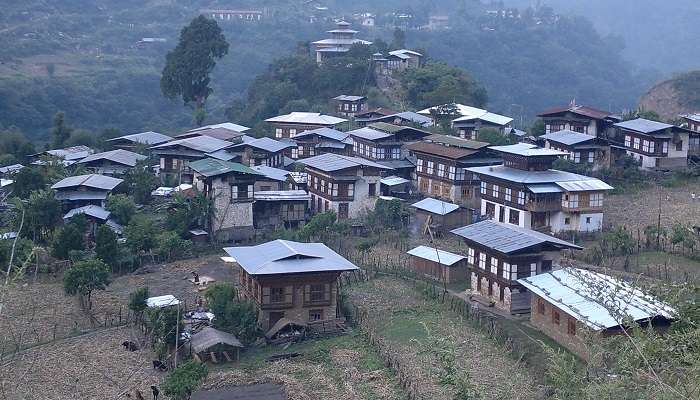
Bhutan is a kingdom renowned for its captivating scenery, soaring Himalayan peaks, and a deep respect for tradition. With a unique concept of Gross National Happiness, well-being reigns supreme over material wealth. Dotted throughout the country are villages like Khoma, where time seems to slow down. Known for its verdant lush greenery and vibrant weaving culture, Khoma offers a glimpse into Bhutan’s soul. Women here are skilled artisans for generations, keeping this craft alive. Whether you’re seeking cultural immersion or wanting a chance to witness ancient crafts or connect to nature, visit Khoma village in Bhutan!
History Of Khoma
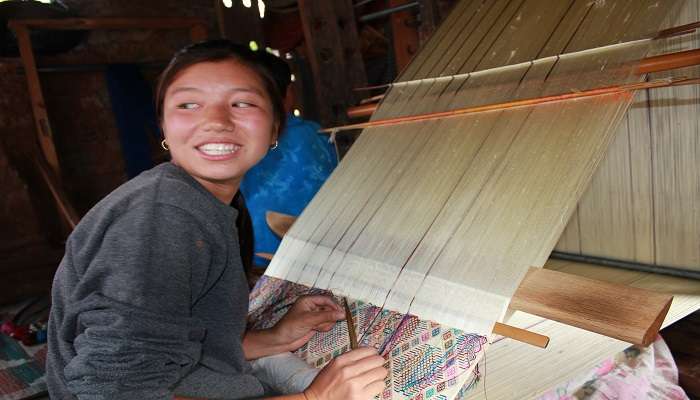
According to history, Guru Rinpoche was meditating at Singye Dzong when the deities of Tshokar and Tshonag pledged to protect the area. However, the deity Tshonag Drakpa Gyeltsen broke this promise and descended as a large serpent along the Khomachu. Riding a black yak, he almost reached present-day Sumpa. Guru Rinpoche, aware of the situation, hurried to Sumpa and arrived before the deity could reach. The unfaithful and evil deity, realising Guru Rinpoche’s presence, hid in a cave beneath Khoma village. Knowing that the deity may harm people if not subdued, Guru Rinpoche secretly meditated in a cave above present-day Khoma village for six months, naming it Sang Wai Da Druk—the secret cave of six months. During Guru Rinpoche’s meditation at Sang Wai Druk, a girl with celestial qualities saw him as an Acharya (a revered teacher). Lacking an offering for him initially, she returned the next day with three bottles of milk. Pleased by her devotion and qualities akin to Khandom, Guru Rinpoche blessed her with the words, “I got a girl I needed.” which led to the name Khomo, and eventually it became Khoma.
According to a different legend described by Khenpo Phuentshok Tashi (2004), Khandro Yeshey Tshogyal meditated in the cave above present-day Khoma village as prophesied by Guru Rinpoche. One day, Moenmo Tashi Khedon, daughter of the local king Khoma Gyelpo who was herding cattle. Upon encountering Khandro Yeshey Tshogyal, recognized her as a Khandrom (woman with celestial qualities). Yeshey Tshogyal developed affection for her and Tashi Khedon would offer her milk and honey. Later, Khandro Yeshey Tshogyal presented Tashi Khedon to Guru Rinpoche, who remarked, “I got a girl I needed” (where “Mo ” means girl). Thus, the place became known as Khomo, later evolving to Khoma due to pronunciation changes.
Must Read: Shopping In Thimpu
Places to Visit In Khoma
A visit to Khoma Village in Lhuentse is incomplete without visiting the nearby places of interest. In this section, we will look at some of the noteworthy attractions.
1. Bumdeling Wildlife Sanctuary

Established in 1998, Bumdeling Wildlife Sanctuary in Bhutan encompasses over 1500 sq km and is a haven for nature enthusiasts and bird watchers. This wildlife sanctuary features diverse landscapes, from soaring Himalayan mountains to pristine lakes. Bumdeling Wildlife Sanctuary is home to endangered species like the majestic snow leopard the elusive red panda. Identified and recognized as an Important Bird Area by Birdlife International, it shelters the striking, black-necked crane. And Ludlow’s Bhutan Swallowtail, the only endemic butterfly in the world, is found here. Explore and soak in the raw and pristine wilderness of Bhutan’s captivating biodiversity to connect to nature.
Distance From Khoma: 186 km approx.
Best Time To Visit: March to August
Operating Hours: 9.00 am – 5.00 pm (Monday to Friday)
2. Lhuentse Dzong
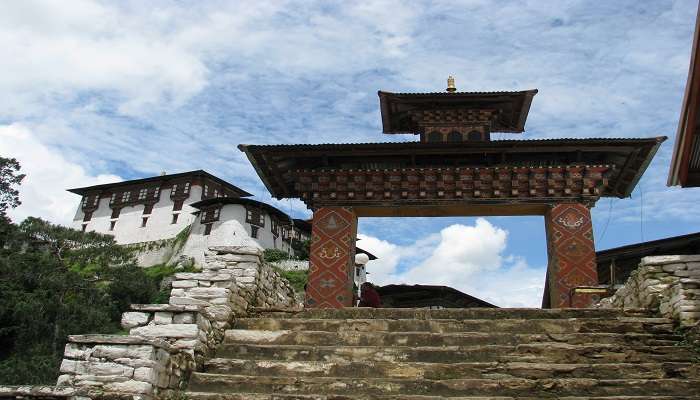
Lhuentse Dzong’s history is shrouded in a fascinating duality. While some historians say that the monastery was originally established by Pema Lingpa’s son Kuenga Wanpo in 1543, some trace its roots to a 16th-century temple or a meditation centre built by revered figure Ngagi Wangchuk. Lhuentse Dzong consists of five temples, out of which three are in the Central tower and dedicated to Padmasambhava or Guru Rinpoche, a tantric Buddhist master. The remaining two are dedicated to Amitabha Buddha and Avalokitesvara. The Kunre, the assembly hall for the monks, on the upper floor, shelters 100-plus monks.
Distance From Khoma: 10 km approx.
Best Time To Visit: March to August
Operating Hours: 9.00 am – 6.00 pm
Suggested Read: Things To Do In Bhutan
3. Gangzur Village
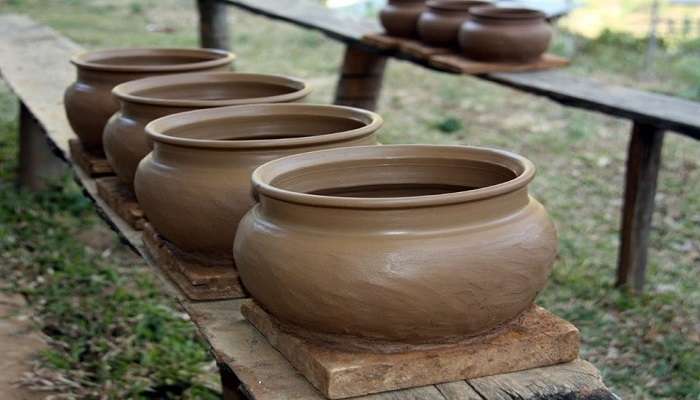
Set on a beautiful valley, the village of Gangzur is at a stone’s throw distance from Lhuentse Dzong in Bhutan. Nestled amidst emerald valleys, Gangzur boasts a unique heritage. Gangzur is a haven for pottery enthusiasts, who enjoy the rhythmic thud of clay and the practised hands of women artisans creating a symphony keeping the handmade pottery alive. Gangzur women clung to its pottery craft, fearing extinction threat due to imported alternatives, transforming it into their livelihood. Witness the skilled hands mould the earth into functional and beautiful pieces. Buy some beautiful pieces as souvenirs and support Gangzur’s artistic spirit.
Distance From Khoma: 4.8 km approx.
Best Time To Visit: March to August
Operating Hours: None
4. Chorten Kora

At an altitude of 1750 m, Chorten Kora is said to have been built over 12 years around 1740 by Lama Ngawang Loday. Modelled after Boudhanath Stupa in Nepal, the pinnacle was originally carved from a huge stone, which Lama Shacha Gyalpo replaced with a gilded cupola with his prayers. The huge stone miraculously descended at night, found beside the chorten to date. As an offering from the Dakpa people of Arunachal Pradesh, locals believe that an 8-year Dakini girl, with her free will, was sealed alive in the chorten. Every year, Dakpas come for circumambulation on the eve of the Chorten Kora festival.
Distance From Khoma: 184 km approx.
Best Time To Visit: March to August
Operating hHours: None
Suggested Read: Burning Lake
5. Autsho Suspension Bridge
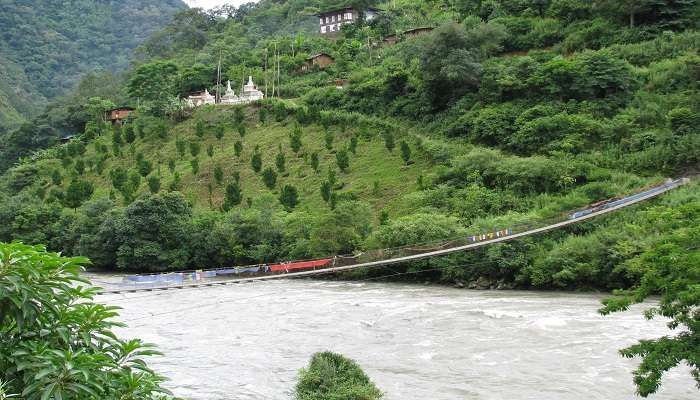
Built on the Kuri Chhu River of Bhutan, this wobbly bridge is crafted from steel cables and wooden planks. This pedestrian bridge offers a thrilling experience for those who dare to cross. This bridge is built to connect the village of Autsho to the wider region of Bhutan. Enjoy the thrill with every gentle sway beneath your feet and you will find locals busily crossing your path with their donkeys and cattle. Unwind and connect to the lush green backdrop. One cannot get enough of the lush green view of the rolling hills and the pristine turquoise waters rushing beneath.
Distance From Khoma: 48.1 km approx.
Best Time To Visit: March to August
Operating Hours: None
How To Reach
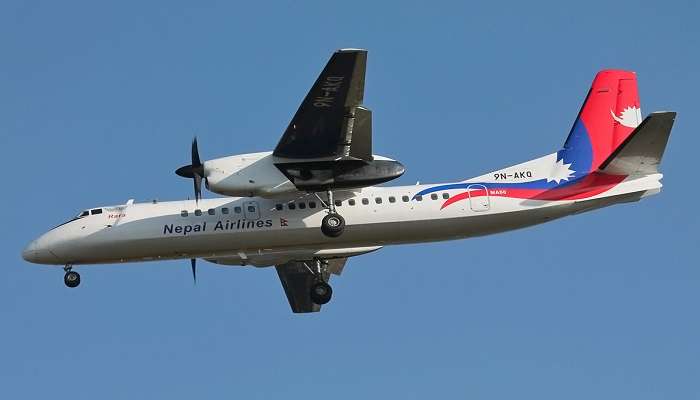
Bhutan enjoys decent air connectivity with a few countries in Asia. Its Paro International Airport is well-connected with India, Bangladesh, Nepal, and Thailand. Khoma is around 580 km from Paro International Airport, Bhutan. You can easily reach Khoma from the airport using these modes of travel.
The fastest way to reach Khoma is to fly to the domestic airport in Bathpalathang (BUT) in Bhutan and take a taxi to the village around 310 km away. You can also take a taxi from Paro International Airport and directly reach Khoma Village via road, which takes around 10 hours.
Further Read: Restaurants In Paro
Khoma village in Lhuentse, with its captivating beauty, rich history and culture, lingers in the mind long after your visit. Enjoy the rhythmic clatter of looms and the whispers of legend amidst its vibrant, deep-rooted tradition. Be sure to carry a piece of Khoma’s heritage, a Kishu Thara or a memory of serene landscapes. Khoma, a clustered village where time slows down, inviting you to relax and reconnect with a simpler way of life. Let this soul-soothing rhythm of a village lifestyle melt away all your stress. Start planning your trip to Bhutan if this guide interests you!
For our editorial codes of conduct and copyright disclaimer, please click here.
Cover Image Credit: Ugyenlhendup for wikimedia commons
Frequently Asked Questions About Khoma
When is the best time to visit Bhutan?
Generally, spring (March to May) and autumn (September to November) are the best times to visit Bhutan. However, summer and winter have their own perks and charms.
Is photography allowed at Lhuentse Dzong?
Always ask permission or check with your guide before photographing or filming in Dzongs, monasteries, temples, or other religious institutions.
Is there any dress code while visiting dzongs or monasteries?
Modest dress code should be followed. Clothing which covers arms and legs is a must.
What are a few travel tips for travellers?
It is recommended that you plan your day early. Bhutan doesn’t fancy any nightlife. Remember to carry sufficient cash at all times, as not many ATMs are functional.
What are the activities to do in Khoma village?
One can attend a weaving workshop, explore the village and indulge in local culinary delights, local historical places and monasteries or go on hiking.
People Also Read:
Tourist Places In Bhutan Trekking In Bhutan Hiking In Bhutan

Get ready to wander the world through amazing visual tours that we provide via our blogs and stories. As a content writer, I love sharing incredible travel experiences that inspire readers to plan their own adventures and create unforgettable memories. From planning to execution, everything has already been served in these amusing tales. Let’s explore the world together, one destination at a time!











